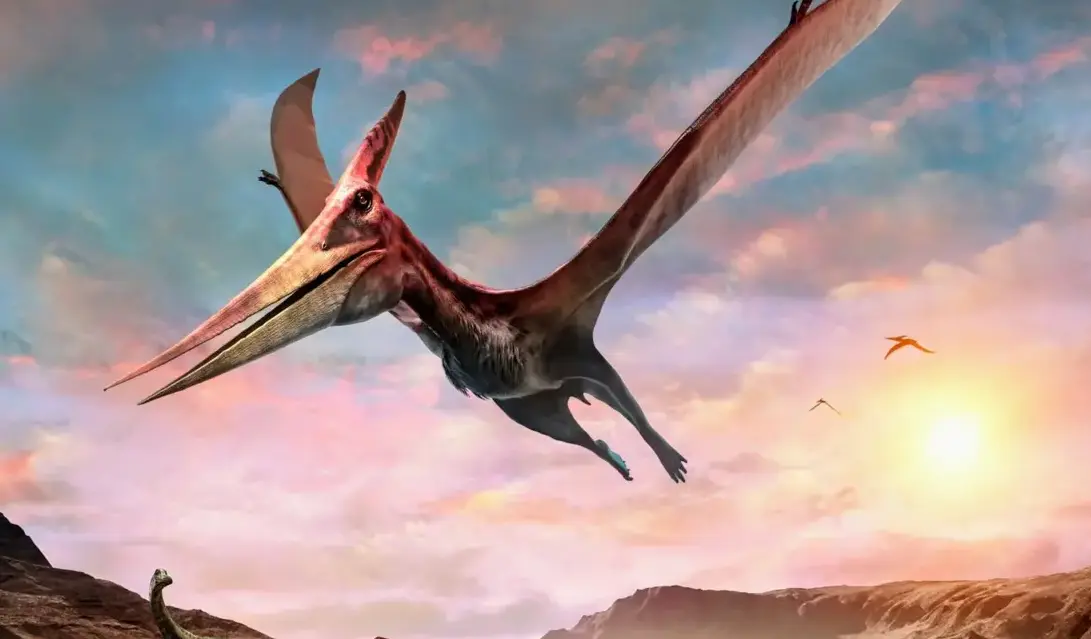Long before the skies of the Mesozoic Era (252-66 million years ago) became the domain of some of history’s most spectacular flying creatures, pterosaurs were already magical creatures. These winged vertebrates don’t just rule the skies; They also evolved on land in unexpected ways.
Yes, you read it right; Pterosaurs were masters of land life. A new study sheds light on a fascinating twist in their evolutionary path. The ability of pterosaurs to adapt to life on land played a decisive role in their transformation into huge aerial giants with wingspans of up to 10 meters.
It all started with climbing trees
“Early pterosaurs were highly specialized in climbing, with extreme modifications to their arms and legs similar to those found today in climbing lizards and birds such as woodpeckers,” said lead researcher Robert Smith, from the University of Leicester.
“Holding on to vertical surfaces with your fingertips for long periods of time is a difficult task; it is much easier for small, light animals.” Therefore, these early pterosaurs were probably restricted to arboreal habitats and thus had small body sizes.
Life of pterosaurs on land
Everything changed in the Middle Jurassic period. The arms and legs of pterosaurs underwent a radical transformation that more closely resembled the arms and legs of land animals. This change opened up a whole new world of ecological possibilities by providing them with a variety of feeding strategies.
“These discoveries underscore that to fully understand the evolution of pterosaurs, all aspects of pterosaur movements, not just flight, must be examined. The ability of pterosaurs to fly is only part of their story,” Smith said.
“By studying how they lived in trees or on the ground, we can understand what role they played in ancient ecosystems.”
Evolution of pterosaur bones
The details of the pterosaur’s arms and legs were crucial to this transformation process. Early pterosaurs had short bones at the base of their fingers and toes, ideal for climbing trees.
However, as they wove their evolutionary web, their structural patterns reversed; The main bones became longer and the distant ones became shorter. Its claws also became straighter and less curved; This shows that they are better adapted to walking.
Mobility of pterosaurs on land
Since the land was already populated with dinosaurs and other reptiles, it was a clever ploy to avoid competition, leading pterosaurs to take advantage of ecological niches that required both flying and walking.
“In early pterosaurs, the hind legs were connected by a flight membrane that severely hindered walking and running. Later, in more advanced pterosaurs, this membrane split along the midline, allowing each hind limb to move independently,” said Dr. David Unwin.
“This, along with changes to the limbs, was an important innovation that greatly increased the mobility of pterosaurs on land.”
Various lifestyles
The ability to adapt eventually freed pterosaurs from the limitations of climbing and allowed them to evolve into huge celestial creatures. This evolution has also given rise to some strange feeding strategies. Such a feature gave rise to hundreds of fine, needle-like teeth for filter feeding; This is reminiscent of how modern flamingos fed 120 million years before the first flamingos evolved.
Overall, this exciting discovery provides a more complete picture of the diverse lifestyles of pterosaurs, from treetop dwellers to land explorers and ultimately giants of the sky.
Rethinking the evolution of pterosaurs
This new understanding of the terrestrial movement of pterosaurs sheds light on the broader drivers of their evolutionary success. Beyond their aerial abilities, it’s clear that these ancient reptiles dominated both the sky and land, adapting to a variety of ecosystems. This dual ability likely contributed to their extraordinary durability and longevity throughout the Mesozoic era.
By studying how pterosaurs evolved in different environments, researchers are beginning to see a more comprehensive picture of their evolutionary path. Such findings also inspire further research into other prehistoric creatures that may have shown similarly unexpected adaptations.
As we discover more about these ancient worlds, it becomes clear that evolution often provides surprising strategies to help species overcome the challenges of their time. The study was published in the journal Current Biology.













